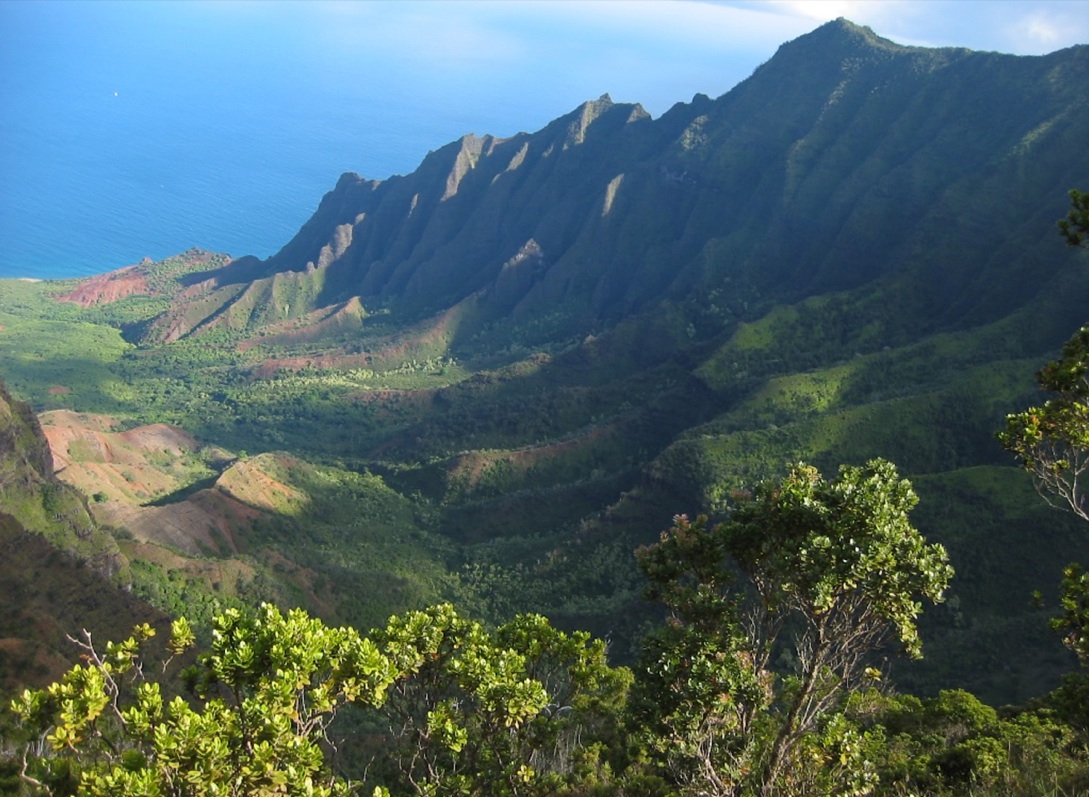Koke'e State Park, Kauai, Hawai'i (Oct 4th - Oct 10th 2015)
Located north of Waimea Canyon on the west side of Kauai, Koke'e State Park covers over 4000 acres of fluted cliffs, lush green tropical rainforest and cloud covered bogs at an elevation of roughly 3000 to 4000 feet above sea level.
With over 45 miles of hiking trails through cloud forests covered in mosses and ferns, Koke'e State Park is an excellent spot to see native Hawaiian plants (like koa, 'ohi'a, and mamane trees) and colorful endemic Hawaiian forest birds (like the apapane, i'iwi and 'amakihi).
 |
| Koa trees can reach heights of well over 100 feet. |
 |
| I'iwi are bright orange-red and have long curved bills. |
 |
| Apapane rely heavily on the nectar of 'ohia blossoms. |
 |
| Beautiful 'Ohi'a trees are common in Hawai'i |
 |
| Mamane trees can grow to over 50 feet and prefer higher elevations. |
 |
| 'Amakihi are green-yellow Hawaiian honeycreepers. |
 |
| Akala (giant Hawaiian raspberry) |
Koke'e's ecologically rich high elevation forests are truly unique in the world and are in need of protection from invasive plants which threaten their existence.
On the Wilderness Volunteers Koke'e trip our service project will focus on the removal of non-native, invasive plants and vines such as Kahili ginger, Strawberry guava, Firetree, and Banana poka.
Our partner organization on this project is the
Koke'e Resource Conservation Program, a volunteer based alien species control program working in cooperation with the Hawaiʻi Department of Land & Natural Resources State Parks Division.
 |
| The Banana Poka is an aggressive woody vine that can entangle and kill large stands of forest. |
Learn more about Kauai’s native plants, flowers, trees and birds in the cloud forests of Koke'e with Wilderness Volunteers!
Read more about the area and the project
here.

















